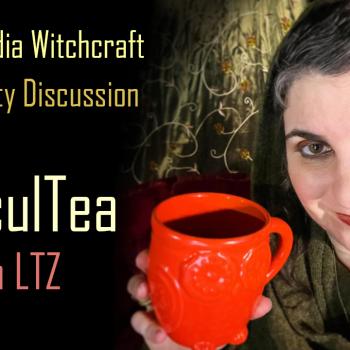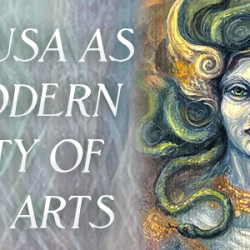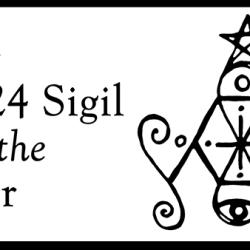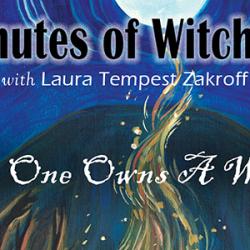Getting back to our series on looking at the essence of being a Witch series….refer back to Part I, Part II, and Part III here if you haven’t read them yet…
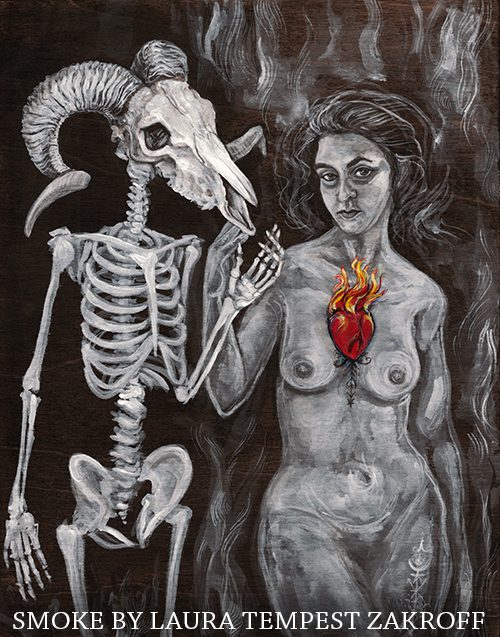
The earliest witches were those tapped into directly working with the realm of spirits. If we consider the possibilities hidden within cave paintings around the world, we’ve been around a long, long time. Be it gut instinct or the result of too many novels about prehistoric humanity, I get the feeling that even in close-quarter tribal living situations, the Witch probably occupied their own nook in the far back.
Why? Working with spirits and deity alters you – or as some would say, perhaps we’re differently wired from the start, which is why we do what we do. Although we may do a lot of work for the good of the community, that doesn’t mean we’re social creatures by nature. We’re already keeping a lot of company as it is. Even if you can’t see them. Adding more people to the mix can get exhausting very quickly. Space, distance, solitude provides mental and spiritual sanctity.
But the communal distance isn’t just for the benefit of the Witch – most people are not comfortable with the concept of the Other – of spirits, gods, visions, and liminal spaces. They may respect it, be in awe of it, even worship it, but they’re really just totes fine with it staying over there. Along with the Witch.
Which gets me to the sticky topic of covens and their somewhat unnatural nature in my book. Before anybody has a conniption and spills wax on their cloak – I do understand that the coven structure is something that works for many. And as always, if it works for you, that’s wonderful. But I’m here to unravel why in a long-term historic context, they don’t quite make sense to me.
In every society, there is a certain order to things that can be seen in a repeating pattern for thousands of years all over the planet. You have those who directly work with the sacred/spiritual (priests, clergy, shamans, witches, etc), and the rest of the community that in varying degrees follows the beliefs and rules of the divine while going about their own business. They acknowledged the divine through various protocol, festivals, and ritual outlined by the clergy, while the latter directly dealt with that realm. On their own, in temples, in sanctuaries, in places apart from the rest of society.
In various “witch-cult” theories, the idea is that pre-Christian beliefs had to go underground to survive, and covens were a way to keep the old gods alive. Other theories and systems believe that Christianity just got layered on top of the older practices and were practiced in covens or families. Either can make sense (and there’s varying degrees of evidence supporting both depending on who you ask), but where it gets a bit strange for me is the idea that everyone in the coven was a priest/priestess kind of Witch. It’s a lot of cooks for one cauldron (in a regular, daily sense).
If you consider the Witch in a professional sense – it’s highly unlikely that you had a slew of them in one area – just like you wouldn’t have 6 shoemakers for a village of 200 people, or 10 blacksmiths. Add to it that professionals of all kinds have very specific ways of doing their thing, in their own way. They rarely combine forces unless the population or space requires it.
What I can see happening is a convening of witches – or in more modern terms: a convention. Where Witches would travel to a certain location on yearly or so basis, talk trade and exchange wisdom, perhaps take care of some big issues by working together. (I doubt they had badges and ribbons – but perhaps they did have guests of honor and I’m sure late-night room parties were probably part of the deal. I wonder if they covered travel expenses…)
And then they returned back to where they lived, most likely solitary on the edge of the community (or as some say, hedge). There, the Witch would continue to serve the needs of their area, even if it didn’t apply in a larger, communal spiritual context anymore – and working with the Other in their own terms. Even if the town didn’t openly worship or claim to believe in the Other, they still respected it – and in many cases – feared it. If anything, the continuation of witches throughout time has hedged on one major factor: we are the problem-solvers. When humanity has been at its least-educated or most-oppressed, thwarted by greater forces, the Witch has been there. We heal, we charm, we cleanse, and we deal with the darker side of things as well. We get shit done. (Which is usually a problematic thing for those in authoritative positions.)
We Witches do like our hedges, our little corners in the backs of caves, our cottages at the edge of the woods and civilization. We cherish our peace and quiet, and our autonomy. But we do know (or at least should know) when it’s time to combine forces, to convene, to raise energy together. To put aside differences and variations for the greater good. Even if we’re each doing it from our own little corners, it can have an impact. For sometimes edges are made of blades, and those blades are sharp enough to cut through the most troubling of times. That is, if we give ourselves the power to wield them.








